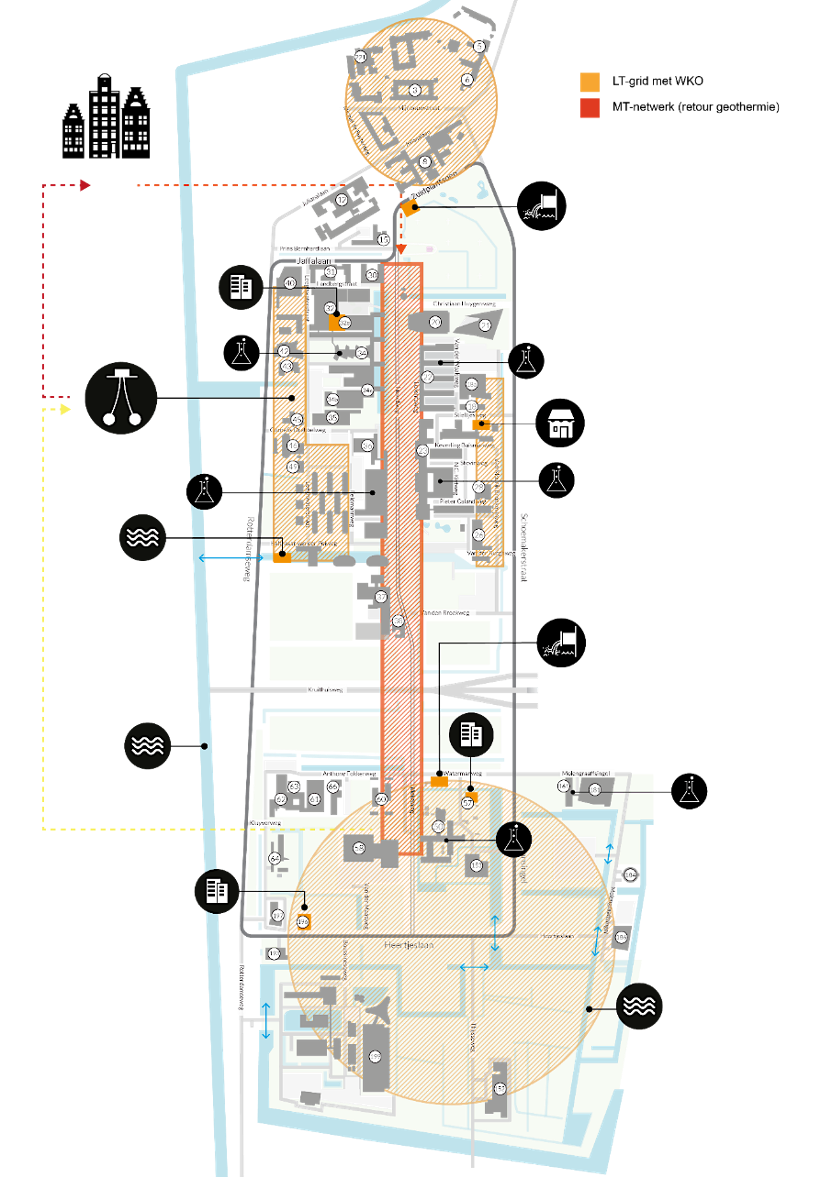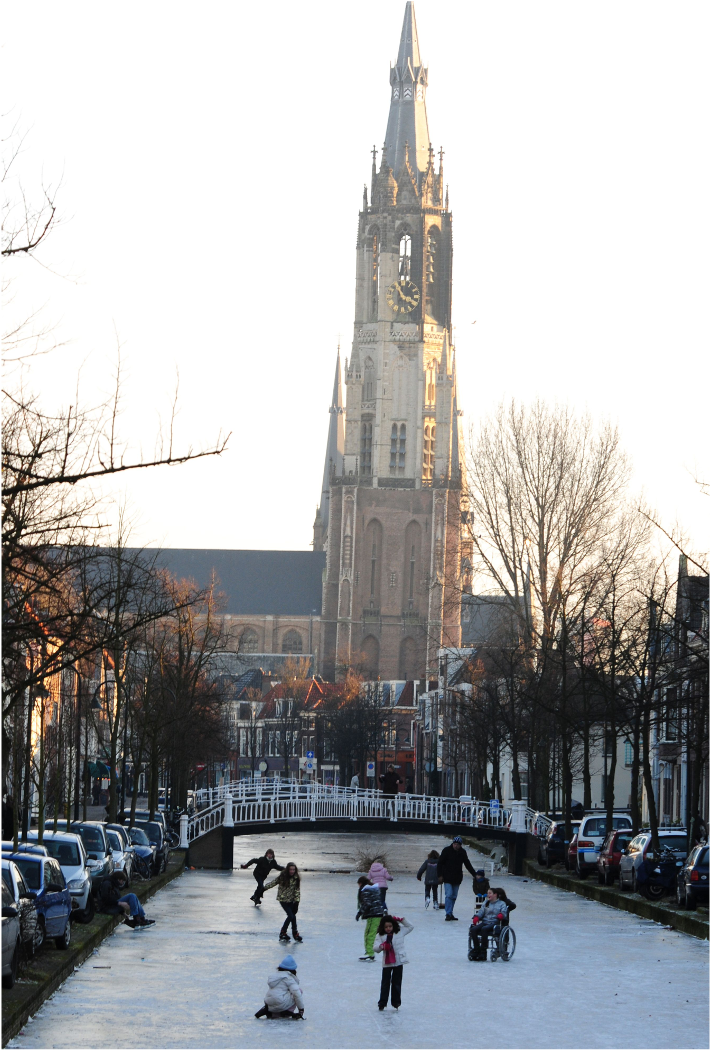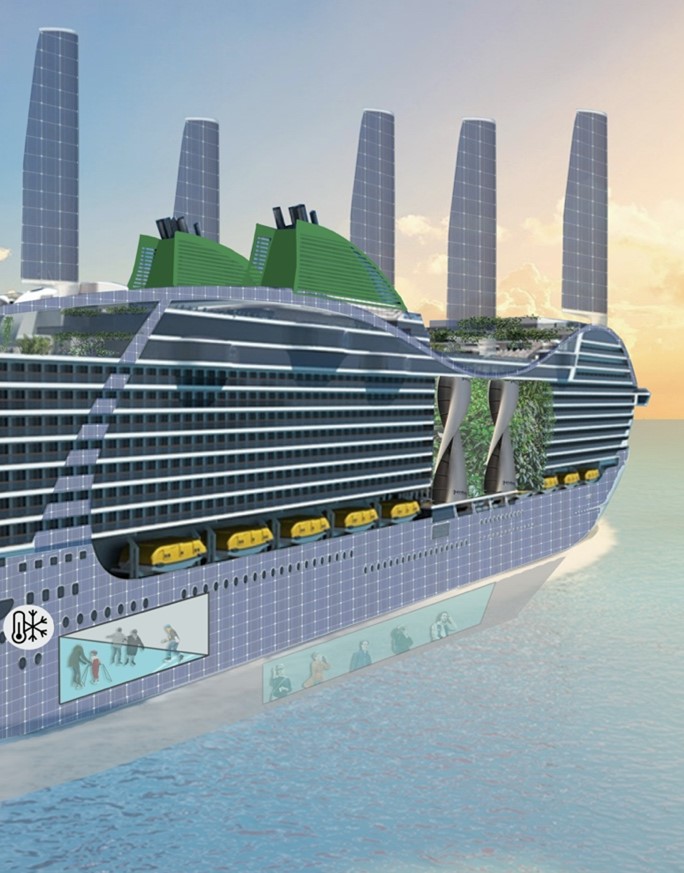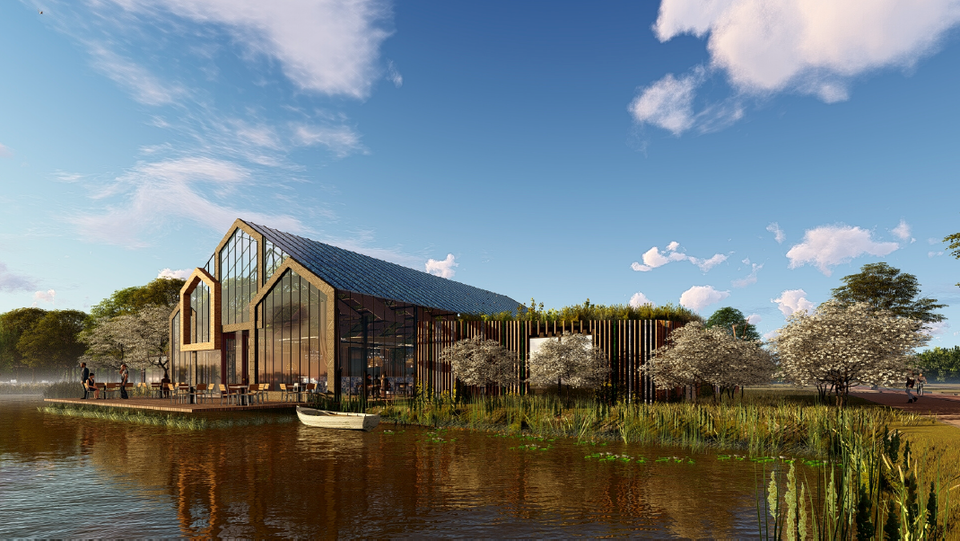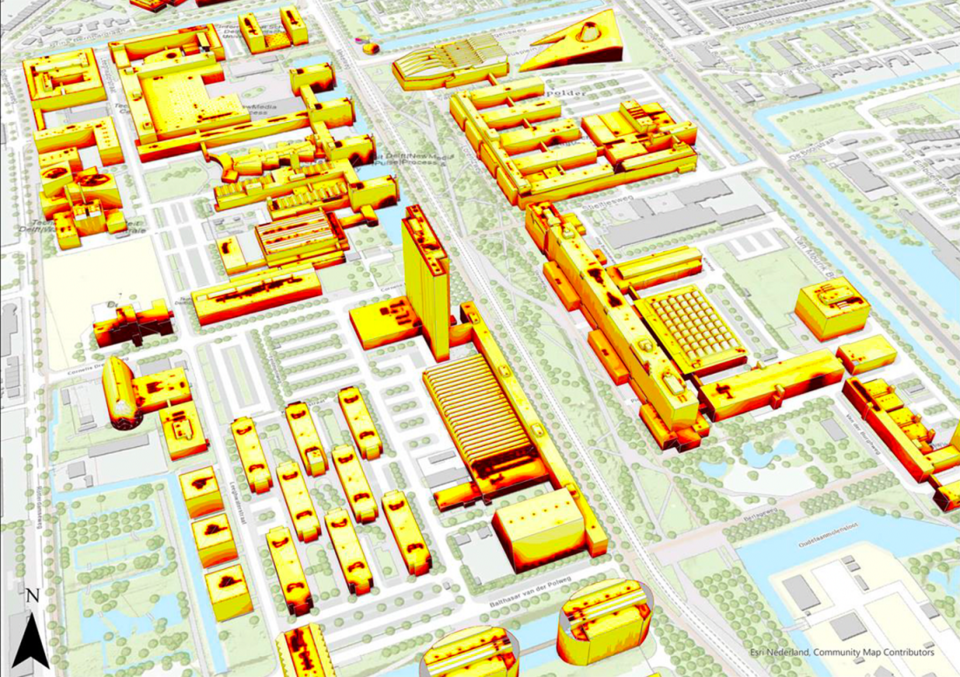A sustainable future
Energy use on the campus is the next to greatest factor in TU Delft’s carbon emissions. In the near future, the energy system needs to be net emission free, supplied by renewable sources. The Energy Systems team is finding out how to do this.
The electricity purchased from wind power has no carbon emissions to be accounted for TU Delft, so all emissions from energy use are related to the use of gas in boilers or in the cogeneration plant that feeds the heat network of TU Delft. In addition, there are emissions related to the use of other fossil fuels (petrol and diesel, e.g. for vehicles). All of these emissions need to be reduced to zero by 2030.
Electricity
By 2030, half of all electricity should be produced on the TU Delft campus. At present, on-campus electricity is produced by a combined heat and power plant (powered natural gas) and by PV panels. To reach this goal TU Delft is planning to use PV on a larger scale, to which end a PV potential study was carried out in 2020-2021. In addition, we are looking into the possibility of using wind. The potential of wind turbines on campus however is limited because of a high building density and the surrounding residential areas. We are also studying options of energy storage, including new types of batteries, fuel cells and chemical conversion processes such developed in the eRefinery programme.
The switch from fossil fuels to sustainable energy supplies will put extra stress on the power grid in the future. This relates to large-scale application of PV, electrification of transport, electrification of the climatisation of buildings, growing use of data and lacking financial drive because energy costs are low.
These developments therefore will get extra attention in the plans for the TU Delft campus.
Heat
The current heat system of TU Delft consists of the high-temperature (HT) heat network supplied by the cogeneration plant and local boilers, heat pumps and ATES systems. Instead of using natural gas we are planning to use a geothermal well as sustainable heat source. Initially, this geothermal source (75oC) can be used for buildings on the campus, serving as a living lab. HT seasonal storage will be required to store the excess/residual heat in the summer. Later, the HT heat could be supplied to areas in the city of Delft, with the return flow at mid-temperature (MT) to supply buildings on the TU Delft campus. MT heat can also be inter-seasonally stored. In due time, many buildings on campus will have switched to low-temperature (LT) heat, which can come from smart exchange and be supplied by various sources, alongside aquifer thermal heat storage systems.
The use of geothermal heat will reduce 60% of carbon emissions from heat production; including HT storage, another 30% will be reduced. Therefore, switching to a geothermal system is essential for large carbon reductions on the campus.
Cold
In the near future, as a result of climate change, there will be an ever-greater cooling demand. At present, cooling is mainly provided by air-conditioning, ATES, and free cooling. Avoiding or reducing the need for mechanical cooling and using sustainable means to cool becomes important with all buildings. The New Stepped Strategy can be used to reduce the (cooling) demand by passive, smart & bioclimatic design. Nature-based and passive solutions are shading, albedo, thermal insulation, natural airflows, flowing water, plants, and thermal mass. In addition, water in the canals and pumping stations around the campus have a considerable cooling potential and can be combined with a cooling storage. In addition to passive solutions and aquathermal energy, absorption cooling will also be a possibility in summer.
Fuels
Within the boundaries of the campus, the energy potential from biomass, wood-like and fibrous or wet and fermentable, is relatively low. This potential increase when TU Delft is going to separate organic waste and convert this into biogas or another form of biofuel. In addition, we are looking into the option of living labs with other forms of biomass, such as algae production. Algae can be used to process waste(water), absorb CO2 and at the same time produce energy (biodiesel). Another form of green fuels are e-fuels (electrical fuels). E-fuels store excess electrical energy from renewable sources in a liquid or gas state. Synthetic methane, synthetic kerosene and hydrogen are examples of e-fuels.



